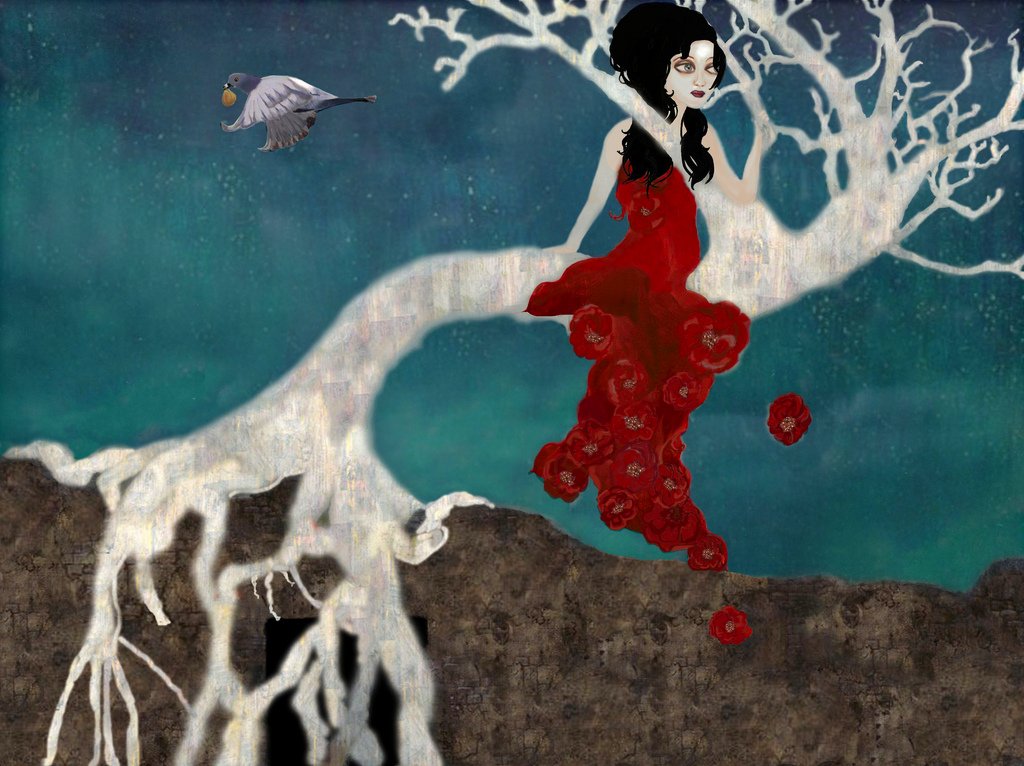
Aubrey Beardsley’s peacock dress illustration for Oscar Wilde’s play, Salomé

Alla Nazimova as Salomé
I

Aubrey Beardsley’s 1894 illustrations of Oscar Wilde’s Salomé are perhaps as famous as the play itself. Recently, however, I stumbled upon a complete surprise in John Coulthart’s blog: in 1923, those drawings were brought to life in a silent film production of Salomé starring Russian actress Alla Nazimova (nee Mariam Edez Adelaida Leventon). Reputedly the hostess of parties ablaze with debauchery--at her very own “Garden of Allah”-- Nazimova was unmoved by the studios’ fears of scandal and therefor took on much of the extremely high expense ($350,000) of the film’s production herself. Much of the expense seems to have come from the costuming, with all the textiles being shipped from Paris.
Nazimova, who inspired Tennessee Williams to become a playwright with her 1936 performace of Ibsen’s Ghosts, had little trouble playing Herod’s sultry teenage daughter convincingly, though she was herself 42. However, the film flopped miserably, as the morals of the day found it just as unacceptable as Wilde’s and Aubrey Beardsley’s contemporaries had found the play and its illustrations.

“The Dancer’s Reward” (Aubrey Beardsley)

Alla Nazimova

Black Cape (Aubrey Beardsley)
Above, you can see the inspirations for the collar, the flower-designs, the shape of the cape, and the odd head-piece.

Though I do not have Nazimova’s version of Salome’s famous Dance of the Seven Veils to share with you here, I do have something that is infinitely (in my opinion) better: Rachel Brice, performing a more modern, stylized version of what Aubrey Beardsley called “The Stomach Dance.” Among the long list of things Brice could convince someone to do just by dancing for them, I can add: her performance convinced me to give up several hours of the day towards trying to learn this style of dance.
And here is Zoe Jakes (not me, unfortunately), to show you that there are really no limits to what your body can do. I’m serious. Just watch.
Enjoy!










































